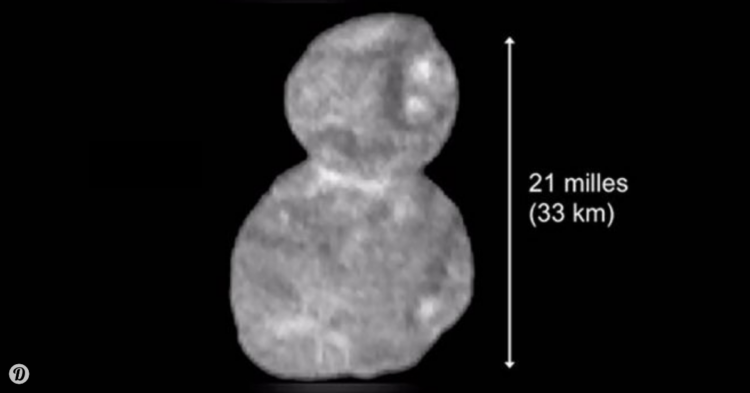Here on Earth, exploration seems kind of, well, over. Sure, there are plenty of places I’ve never been, but there are few that I can’t see from the comfort of my own home via Google Earth. I know it’s not the same as being there, but gosh, getting anywhere is expensive.
That said, exploration is actually far from over. And you can always count on the good folks at NASA to not only keeping pushing the boundaries, but to meet some incredible expectations on the way.
NASA’s New Horizons team didn’t get New Year’s Day off because they had an appointment with history.

The New Horizons probe made history when it met up with the most distant object ever to be explored: A 21-mile long object called Ultima Thule.
The first clear images taken by New Horizons show a “contact binary” object — one made after two orbs contacted each other and stuck together billions of years ago.

The result resembles a snowman, with a 9-mile tall sphere attached to a larger, 12-mile tall sphere. Amazingly, the New Horizons team believe that they were joined after colliding at speeds “no faster than two cars in a fender-bender.”
Nevertheless, this distant object will be relentlessly mined for data over the coming months.
“We are seeing a physical representation of the beginning of planetary formation, frozen in time,” said Jeff Moore, New Horizons Geology and Geophysics team lead. “Studying Ultima Thule is helping us understand how planets form — both those in our own solar system and those orbiting other stars in our galaxy.”
The sheer distance New Horizons had to cover to meet up with Ultima Thule is mind-boggling.

Remember when New Horizons visited Pluto in 2015, and we got all those heart-shaped planet memes? Ultima Thule didn’t even have its name yet, and wouldn’t until March 2018. And after leaving Pluto, the probe had to travel another 1.5 billion kilometers to reach Ultima Thule. That’s 300 million km more than the distance between Earth and Saturn, and there are two other planets in between here and there.
New Horizons launched back in 2006, and now, 13 years later, it’s 6.5 billion km from home.

And it was still traveling at the breakneck speed of 14 km/s. So, at that distance, the signals and images it sends back to Earth take six hours to reach us. We won’t have all the data it collects for another 20 months.
And yet, New Horizons isn’t even done yet.

Its fuel reserves should be enough for it to rendezvous with another object of interest out there, and its instruments will have enough juice to keep operating into the 2030s.
Pretty amazing!
h/t BBC

















































